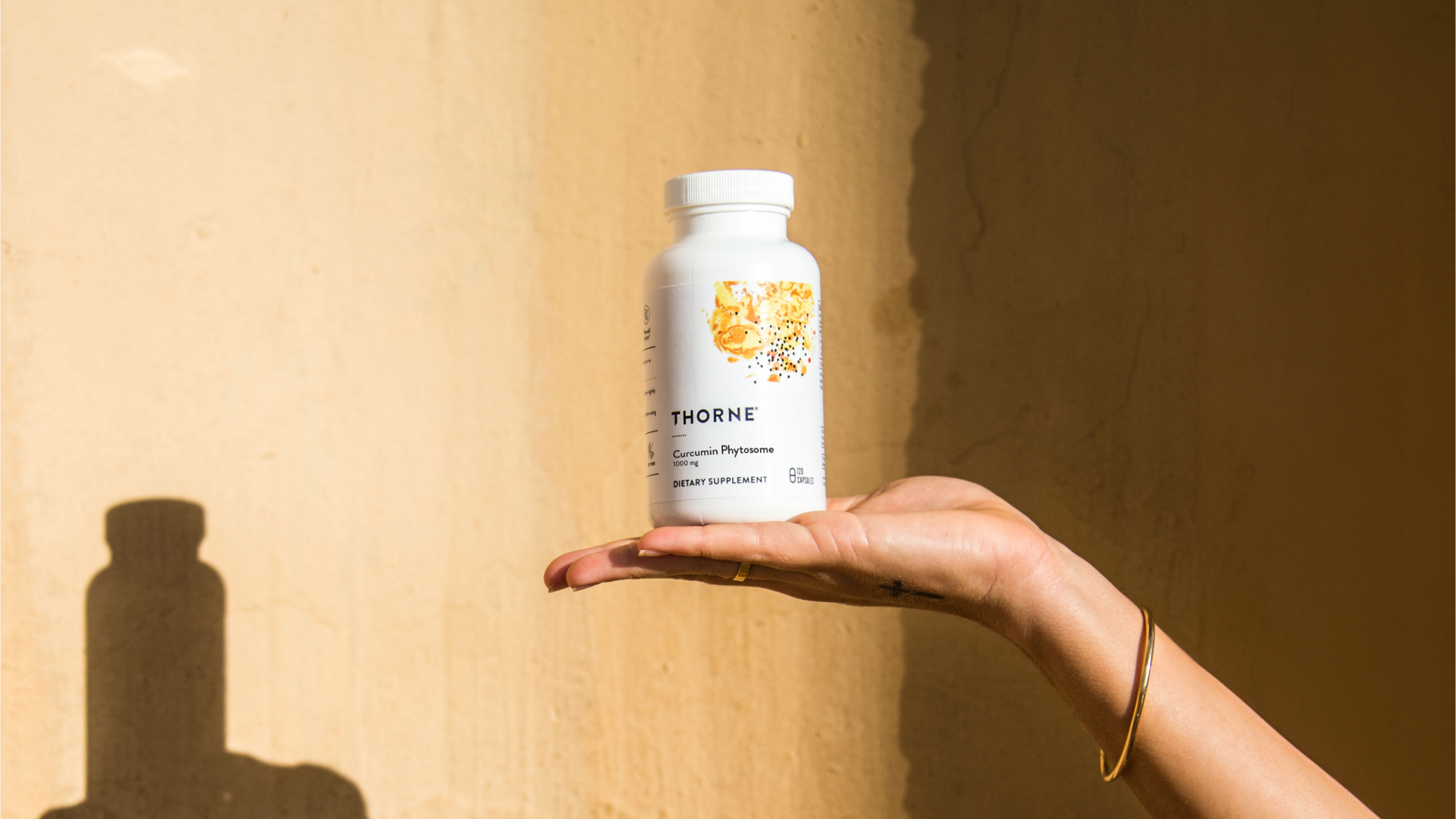Some people are creatures of habit, feeling lost without their planner and scheduling their days down to the hour and minute. Others of us thrive without a plan or schedule in place, with no two days ever looking quite the same. No matter which camp you consider yourself to be in, your body loves consistency and routine – craving balance as its happy place.
Officially this is called homeostasis, and it’s your body’s very own “zone of excellence,” where it possesses the energy, time and resources to be its very best self. But life happens, and things both within and outside your control can impact that delicate balance. Thankfully, there are natural ways to maintain homeostasis and keep you in balance no matter what life throws your way.
This blog covers how palmitoylethanolamide (PEA) in combination with selected specific ingredients offers support for physiological stress or discomfort associated with occasional stiffness and compromised tissue function as a result of overexertion and everyday stress.

What is Physiological Stress
Physiological stress is a perfectly normal response in life, but it doesn’t always come at predictable or convenient ones; as much as we all wish we could schedule such events, that’s simply not an option! Physiological stress is an important way that the brain alerts us that we should shift our attention to a certain area of the body. According to Statistics NZ, 1 in 5 New Zealand workers report always or often being stressed by work1, with other occasional discomfort culprits being ageing, inactivity, everyday stress, lifestyle and overexertion.
What does PEA do to Support the Body?
When we live in a state of optimal health, the body naturally produces an amount of PEA that maintains homeostasis. However, negative stimuli (and our modern lives) can sometimes compromise this balance. In turn, the body’s response can lead to a deficiency in PEA production. Supplementing with PEA works with the body’s natural processes to support this delicate balance, calm discomfort and promote PEA levels needed to maintain overall well-being. In combination with curcumin, this can provide natural support for the entire body with a focus on the body’s nervous, immune and muscular systems.
When excited nerves issue sensory information to the brain, the body can react in the form of uncomfortable sensations. In the presence of this discomfort, many commonly choose to deal with it on their own.2 These consumers turn to easily accessible over-the-counter options such as NSAIDs to avoid short-term discomfort.
One study led by the Director of the Slone Epidemiology Center at Boston University evaluated consumer compliance with recommended NSAID usage. The researchers found that nearly one in five individuals exceeded daily maximum doses during a one-week period. When misused or overused, these OTCs can cause gastrointestinal toxicity, stomach bleeding and kidney or liver damage.
For those experiencing only occasional discomforts, a natural approach may be a better option to alleviate physical suffering. Dietary supplements work with the body’s natural processes for physiological stress and soreness without the side effects associated with the overuse of OTC options.
What is PEA?
PEA is an extensively researched natural ingredient for important neuroprotective actions.3 This ingredient has been widely used for decades, and it is available in dietary supplements worldwide as an option for the onset of physiological stress.
PEA is an endogenous fatty acid amide that belongs to the family of biologically active lipids that are increased by the body to soothe discomfort naturally. Identified over 60 years ago when it was isolated from extracts of the brain, liver and muscle of rats and guinea pigs, PEA was later found in chicken egg yolk, olive oil, safflower and soy lecithin, peanut meal, and several other foods.
The biological properties and mechanisms of PEA naturally produced by the body involve a variety of effects including those upon glial and mast cells, cannabinoid-2 receptors, NF-kB, and effects on the nuclear receptor peroxisome proliferator-activated receptors (PPARs). Cannabinoid-2 receptors are more often found on immune cells, in the gastrointestinal tract and in the peripheral nervous system. Glial and mast cells naturally play a key role in the body’s management of discomfort. PEA enhances the effects of the fatty acid anandamide (also referred to as the “bliss molecule”) when it binds to cannabinoid receptors.
Where can I get PEA?
Beyond dietary sources, there are two forms of PEA commercially available. Synthetic forms require the use of powerful synthetic solvents such as toluene. On the other hand, PEA can be naturally derived from safflower lecithin.
Curcumin for Physiological Stress
If you have ever eaten curry or sipped a golden milk latte, you have consumed curcumin. Curcumin is the yellow pigment of turmeric (Curcuma longa L.), the most widely used spice of Indian cuisine and a major ingredient of curry powders. Curcumin is one of the best-investigated ingredients in the supplement industry but shows very poor oral absorption.
The supplementation of curcumin in a phytosomal form can improve bioavailability and stability in comparison with unformulated curcumin
Interested in trying PEA?
Log in to our Practitioner Hub to search FxMed stocked PEA products here.
Not an account holder? Open an account here.
Statistics NZ. (2019) Survey of working life 2018, cited in WorkSafe New Zealand (2021). Improving Work-Related Health: Mentally Healthy Work (https://www.worksafe.govt.nz/topic-and-industry/work-related-health/improving-work-related-health/ ).
- Sansgiry 55, Bhansali AH, Bapat 55, Xu Q. lntegr Pharm Res Pract. 2016 Dec 19;6:1-6. doi:10.2147/IPRP.Sl 03494. eCollection 2017. Review.
- Scuderi C, Bronzuoli MR, Facchinetti R, et al. Transl Psychiatry. 2018 Jan 31;8(1):32. doi: 10.1038/s41398-017-0076-4.
Share:
Related Posts

Thorne Celebrates 40 Years of Good Health
Maggie Chandler April 12, 2024 As it’s often said at Thorne, healthy ageing is a gift. It’s about embracing the way you feel, your experiences,

Healthy Coffee Alternatives: When to Quit Coffee & What to Drink Instead
Dr Thomas Wnorowski February 16, 2024 Key Points: Does the idea of quitting coffee make you feel all sorts of (terrible) things? It’s common. But

How Your Social Network Impacts Your Mental Health
Austin Ruff April 17, 2024 Humans are inherently social creatures. It’s in our nature to connect and want to be connected to the people around

Microbiota-Gut-Brain Axis: Behaviour and Dementia Implications
People take supplements to improve or optimize their health. So what happens when you look at the label, and the ingredient list is filled with

Gut Bacteria and GABA
People take supplements to improve or optimize their health. So what happens when you look at the label, and the ingredient list is filled with


